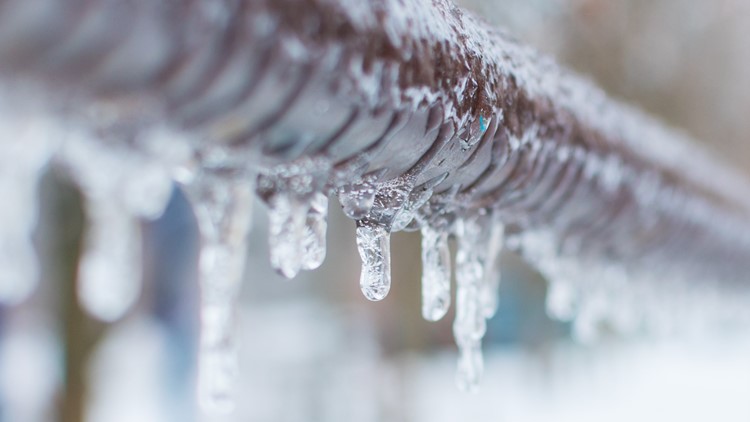Crucial Advice to Prevent Frozen Plumbing in Cold Weather: Professional Insights
Crucial Advice to Prevent Frozen Plumbing in Cold Weather: Professional Insights
Blog Article
Just about every person may have their own unique beliefs when it comes to Preventing and dealing with frozen pipes.

Cold weather can ruin your pipes, particularly by freezing pipelines. Right here's how to avoid it from taking place and what to do if it does.
Introduction
As temperature levels drop, the threat of frozen pipelines increases, possibly leading to expensive repairs and water damage. Understanding exactly how to avoid icy pipes is vital for homeowners in cold environments.
Recognizing Frozen Pipes
What causes pipes to freeze?
Pipes freeze when subjected to temperature levels listed below 32 ° F (0 ° C) for extended periods. As water inside the pipelines freezes, it increases, taxing the pipe wall surfaces and potentially causing them to burst.
Dangers and damages
Frozen pipelines can bring about water system interruptions, building damages, and costly repairs. Ruptured pipelines can flood homes and trigger considerable architectural damages.
Signs of Frozen Water Lines
Identifying frozen pipes early can stop them from breaking.
Exactly how to recognize frozen pipes
Try to find reduced water circulation from faucets, uncommon odors or sounds from pipelines, and noticeable frost on revealed pipelines.
Prevention Tips
Protecting susceptible pipes
Wrap pipelines in insulation sleeves or make use of warmth tape to shield them from freezing temperature levels. Concentrate on pipes in unheated or exterior locations of the home.
Home heating methods
Keep indoor areas appropriately heated up, especially locations with plumbing. Open up closet doors to enable warm air to flow around pipes under sinks.
Protecting Outdoor Plumbing
Yard hose pipes and outdoor taps
Detach and drain pipes yard pipes prior to winter. Install frost-proof spigots or cover outside taps with protected caps.
What to Do If Your Pipelines Freeze
Immediate actions to take
If you believe icy pipelines, keep faucets open up to ease pressure as the ice melts. Use a hairdryer or towels taken in warm water to thaw pipelines slowly.
Long-Term Solutions
Structural adjustments
Consider rerouting pipes far from exterior walls or unheated locations. Include extra insulation to attic rooms, cellars, and crawl spaces.
Upgrading insulation
Buy top notch insulation for pipelines, attics, and wall surfaces. Correct insulation assists maintain consistent temperature levels and reduces the threat of frozen pipes.
Final thought
Stopping frozen pipes calls for aggressive measures and fast actions. By comprehending the causes, indicators, and preventive measures, house owners can safeguard their plumbing during winter.
6 Proven Ways to Prevent Frozen Pipes and Protect Your Home
Disconnect and Drain Garden Hoses
Before winter arrives, start by disconnecting your garden hoses and draining any remaining water. Close the shut-off valves that supply outdoor hose bibs and leave the outdoor faucet open to allow any residual water to drain. For extra protection, consider using faucet covers throughout the colder months. It’s also important to drain water from any sprinkler supply lines following the manufacturer’s directions.
Insulate Exposed Pipes
Insulating your pipes is an effective way to prevent freezing. Pipe insulation is readily available at home improvement stores and is relatively inexpensive. Pay close attention to pipes in unheated areas such as the attic, basement, crawl spaces, or garage. Apply foam insulation generously to create a buffer against the cold. You can also wrap your pipes in heat tape or thermostat-controlled heat cables for added warmth.
Seal Air Leaks
Inspect your home for any cracks or openings that could let in cold air. Seal any holes around the piping in interior or exterior walls, as well as the sill plates where your home rests on its foundation. Additionally, make sure to keep your garage door closed unless you’re entering or exiting. Leaving it open creates a significant air leak that can lead to frozen pipes.
Allow Warm Air Circulation
During cold snaps, it’s essential to allow warm air to circulate evenly throughout your home. Leave interior doors ajar to promote better airflow. Open kitchen and bathroom cabinets to help distribute heat consistently around the rooms. If you have small children or pets, be sure to remove any household chemicals or potentially harmful cleaners from open cabinets for safety.
Let Faucets Drip
A small trickle of water can make a big difference in preventing ice formation inside your pipes. When temperatures drop significantly, start a drip of water from all faucets served by exposed pipes. This continuous flow helps prevent the water from freezing. Additionally, running a few faucets slightly can relieve pressure inside the pipes, reducing the chances of a rupture if the water inside does freeze.
https://choateshvac.com/6-proven-ways-to-prevent-frozen-pipes-and-protect-your-home/

I discovered that blog post about 6 Ways to Prevent Frozen Pipes while doing a search on the search engines. Do you know about someone else who is looking into the niche? Please feel free to promote it. Thanks a bunch for being here. Don't hesitate to come visit our site back soon.
Click Here Report this page